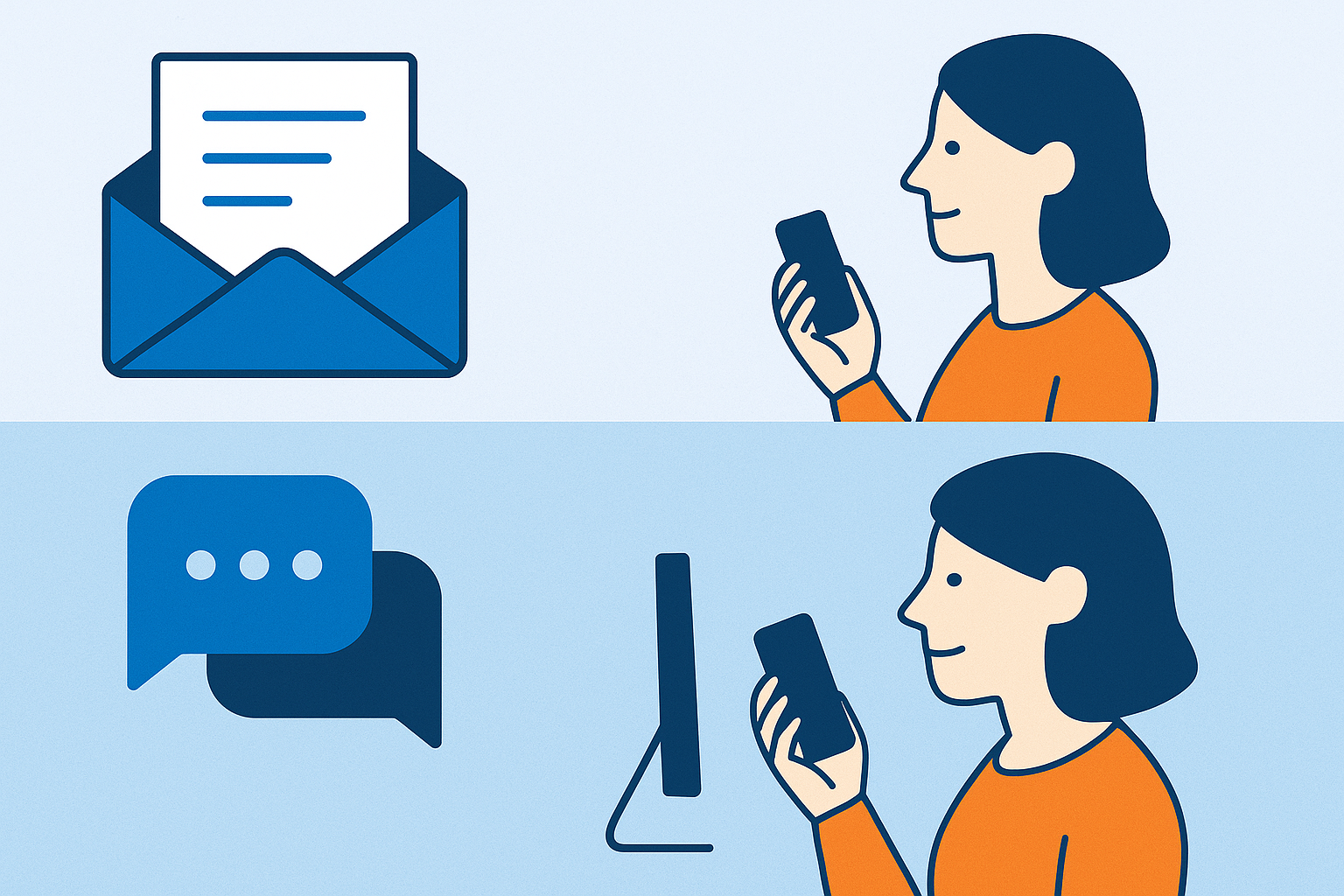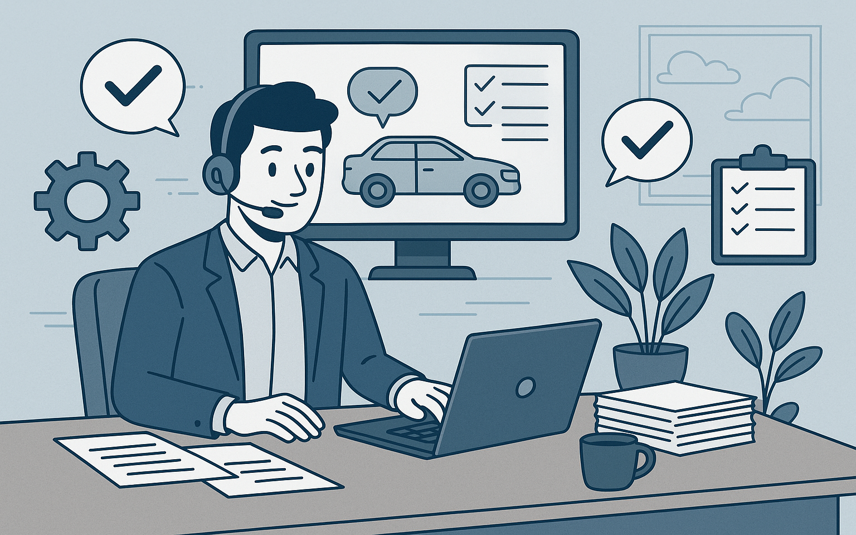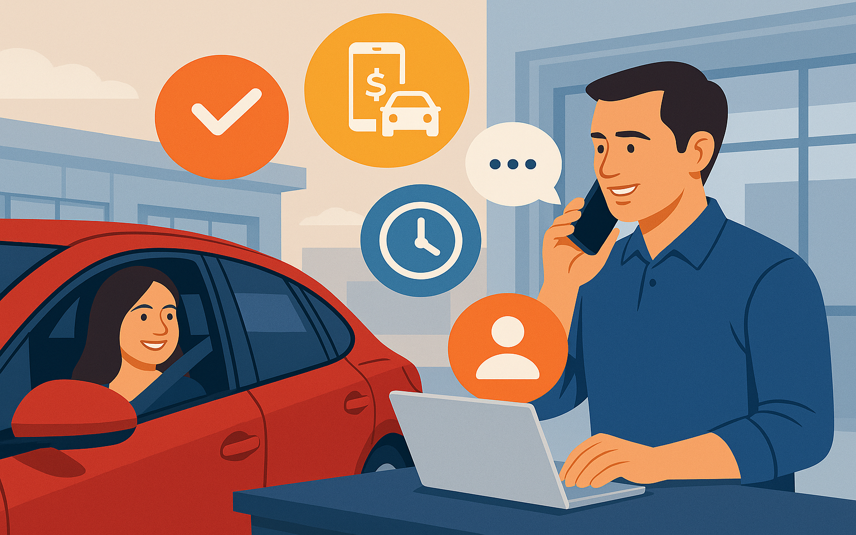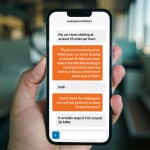Text, Chat, or Email? How to Choose the Right Channel for Every Customer Interaction
Today’s customers expect fast, convenient communication on their terms. Whether they’re booking an appointment, waiting on a service update, or ready to pick up their vehicle, they demand messages that are clear, timely, and in the right format. But many dealerships are still guessing which channels to use and when—leading to miscommunication, delays, and missed […]

Today’s customers expect fast, convenient communication on their terms.
Whether they’re booking an appointment, waiting on a service update, or ready to pick up their vehicle, they demand messages that are clear, timely, and in the right format.
But many dealerships are still guessing which channels to use and when—leading to miscommunication, delays, and missed opportunities.
This post breaks down the ideal use cases for text, chat, and email, so your dealership can deliver a frictionless customer experience, improve efficiency, and boost CSI.
1. Text: Fast, Reliable, and Preferred for Most Updates
When it comes to speed and visibility, texting reigns supreme. With an open rate of over 98% and fast response times, SMS is the ideal channel for time-sensitive, everyday service communication.
Use text to send:
- Appointment reminders
- Check-in confirmations
- Status updates
- Quick approvals
Text is perfect when you need a fast answer and don’t want to interrupt the customer’s day. It keeps the process moving while giving customers a convenient, no-pressure way to respond when they’re ready.
Pro Tip: Use message templates for consistency and time savings. Better yet, automate key texts—like reminders and updates—through your service platform. Just make sure you have proper opt-in from customers to stay compliant and avoid deliverability issues.
2. Chat: Best for Real-Time, Pre-Service Conversations
Chat—whether embedded on your website, mobile app, or even in messaging platforms—is ideal for real-time, pre-appointment conversations.
It creates a low-friction way for customers to ask questions like:
- “Do you have availability tomorrow at 10 a.m.?”
- “How much is a brake inspection?”
- “Can I drop off after hours?”
When staffed in real-time, live chat can build trust and confidence, leading to more bookings. It’s an excellent tool for engaging service shoppers before they commit to an appointment.
Pro Tip: Route chat conversations to your BDC or advisors when possible to personalize the experience and increase conversion. You can also integrate AI-powered chatbots for after-hours or overflow support, ensuring that customers always get a response—even when your team is off the clock.
3. Email: Long-Form, Detailed, and Transactional
Email isn’t dead—it just has a different role to play. It’s the best channel for detailed documentation and anything your customers may want to save or reference later.
Use email to send:
- Repair estimates
- Final invoices
- Service summaries
- Appointment confirmations
- Post-service thank-yous and marketing follow-ups
Email works especially well for longer or more formal communication that doesn’t require an immediate reply. Plus, it’s easy for customers to archive and search later when needed.
Pro Tip: Personalize subject lines with the customer’s name or vehicle details to increase open rates. Always use a mobile-friendly layout since most customers will read your email on their phones. Clear formatting, bullet points, and buttons make a big difference.
Conclusion
The most successful dealerships don’t rely on a one-size-fits-all communication approach. They tailor the channel to the context:
- Text for speed and updates
- Chat for pre-service engagement
- Email for clarity and record-keeping
Want a smarter, unified communication strategy that covers it all?
Schedule a demo with myKaarma and see how it’s done.





